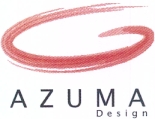Don’t be fooled by deceptive advertising. Using props in a controlled environment is no more than a stunt and are not true reflections off what happens in the real world.
Applying pressure slowly to a screen or bouncing an object in the middle of the mesh isn’t the force a Security Screen is going to endure at a forced break in. There needs to be multiple “Blows” exerting at least 100 joulesof force at specific destination on the screen that will truly simulate a forced entry.
Our products are regularly tested by AZUMA Design and Testing, one of the only NATA approved test labs in the country.


Our screens are better than being just Crime safe.
Fire
Australian Standard AS3959-2009
Bush Fire Protection—Secureview Eclipx stainless steel doors have been tested under this standard and satisfied the requirements for bushfire attack level (BAL) 12.5,19,29,40.
Australian Standard AS1530.4-2005, Appendix B7
Fire Attenuation Test—SecureView Eclipx security screens have been tested in general accordance with this standard when exposed to incident radiant heat. SecureView Eclipx achieves 46.6% reduction in radiant heat flux between the inside and outside of the produc
Cyclonic
Australian Standard 2010:AS/NZS1170.2, Category 3
In cyclonic regions windows and doors may need to be protected from flying debris simulating a category 3 cyclone. SecureView Eclipx security screens have been tested and surpass this standard, resisting the 4kg, 100mm x 50mm timber travelling at 15 metres per second.
Security Australian Standard AS5039-2008
SecureView Eclipx and Xceed security screens continually surpass a range of rigorous knife sheer tests, impact tests, jemmy tests and pull tests. These tests ensure the intrinsic strength and structural integrity of our manufactured security doors and windows.
The Impact Test
The Impact Test is designed to simulate a physical attack on a screen. To perform this test, a large pendulum weight is used to generate 100j of impact energy at a specified point. In order to pass this AS test, the door or window screen must withstand a series of five impacts.
The Jemmy Text
The Jemmy Test involves wedging a lever between the security door lock and hinge and the door frame to which the security screen is mounted. A mechanical winch is used in an attempt to pry the door open. In order to pass the Jemmy Test, the security door must remain securely closed. SecureView Eclipx and Xceed security screens doors and windows passed this AS test with ease.
The Pull Text
When testing type 3 products, such as SecureView Eclipx, a pull test can only be carried out if a sufficient gap is achieved following the Jemmy Test. If no gap is formed, there is nowhere to mount the Pull Test bracket, or hold onto in a real scenario. Because SecureView Eclipx and Xceed products performed so well in each preceding test, the Pull Test could not be carried out and SecureView Eclipx and Xceed security doors and windows automatically passed.
The Knife Shear Test
As its name suggests, the Knife Shear Test is designed to test the strength of the security mesh. The Knife Shear Test involves applying mechanical force with a heavy duty knife to the security mesh being tested. This is carried out three times with a new blade for each. In order to pass the Knife Shear Test, the mesh must not allow the blade to make an incision greater than 150mm. SecureView Eclipx and Xceed security doors and windows passed this test with ease.
For detailed information on relevant Australian Standards refer to http://www.standards.org.au.
